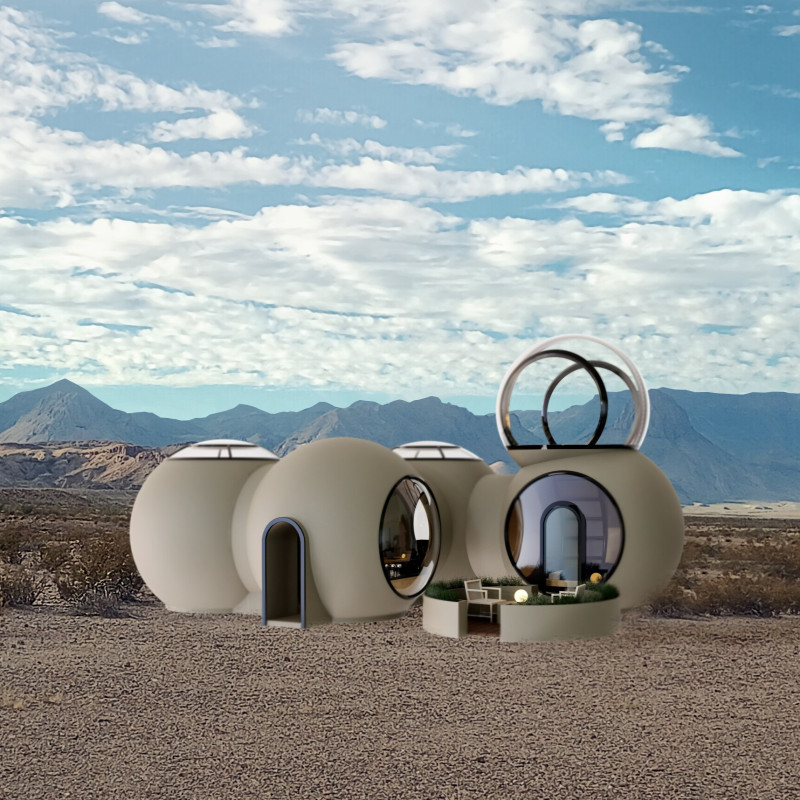5 key facts about this project
At its core, this project serves multiple functions, responding to both the needs of the community and the ecological demands of its setting. The design features open and adaptable spaces, where functionality meets flexibility. This adaptability is crucial in facilitating a variety of uses, from communal gatherings to individual quiet reflection, emphasizing the importance of social interaction and personal respite within the same framework. Natural light plays a central role, not only enhancing the internal experience but also reducing reliance on artificial lighting, thus contributing to energy efficiency.
The architectural form is characterized by its fluid lines and an organic silhouette that echoes the contours of the surrounding landscape. This design approach breaks away from conventional rectangular structures, opting instead for an aesthetic that invites curiosity and engagement with the environment. Large glass panels form an integral part of the facade, allowing unobstructed views and connections to the external world. The transparency of these elements invites nature into the interiors, reinforcing a sense of openness and continuity between inside and outside.
Materiality is a defining aspect of the project, where recycled steel forms the backbone of the structural integrity. This choice emphasizes durability while minimizing environmental impact. Local materials, such as stone and sustainably sourced wood, offer a tactile quality that enhances the building’s relationship with its surroundings. Bamboo and cedar provide warmth and texture to finish spaces, creating a welcoming atmosphere. The integration of green roof systems not only improves insulation but also contributes to the biodiversity of the area, serving as a habitat for local species.
The project incorporates innovative sustainability measures such as passive solar design that optimizes light and air circulation. Shading devices are cleverly integrated into the structure, effectively reducing heat gain in warmer months while allowing sunlight to permeate during winter. Additionally, rainwater harvesting systems are employed, promoting efficient water management and decreasing the environmental footprint of the building. The design utilizes low-VOC paints and eco-friendly flooring materials, further ensuring healthy indoor air quality for its occupants.
As an architectural response to its site, the landscaping around the building plays a vital role in enhancing the overall design. Native plant species have been thoughtfully selected to require minimal irrigation, thus supporting local ecosystems. Outdoor areas are seamlessly integrated, encouraging outdoor activities and promoting a sense of community through thoughtfully designed communal spaces.
What sets this project apart is its comprehensive approach to integrating architecture with the environment while addressing contemporary design challenges. It provides a clear example of how modern architecture can support ecological sustainability without forgoing aesthetic quality. The focus on engaging with the local community and reflecting cultural contexts exemplifies a commitment to place-making that is essential in today's world.
For readers seeking deeper insights, a closer look at the architectural plans, architectural sections, and unique architectural designs will reveal the thought processes behind the arrangement and functionality of spaces. The architectural ideas that underpin this project are worthy of exploration, demonstrating how thoughtful design can cultivate a harmonious existence with nature and promote a sustainable future for communities. Explore the project presentation for more detailed analysis and visual representation of these elements.


























